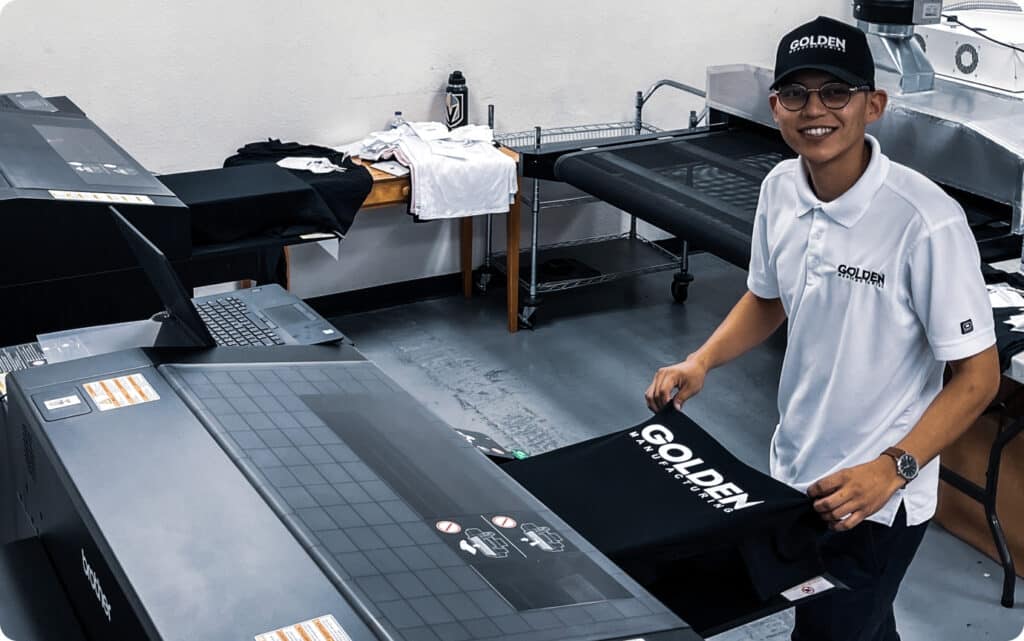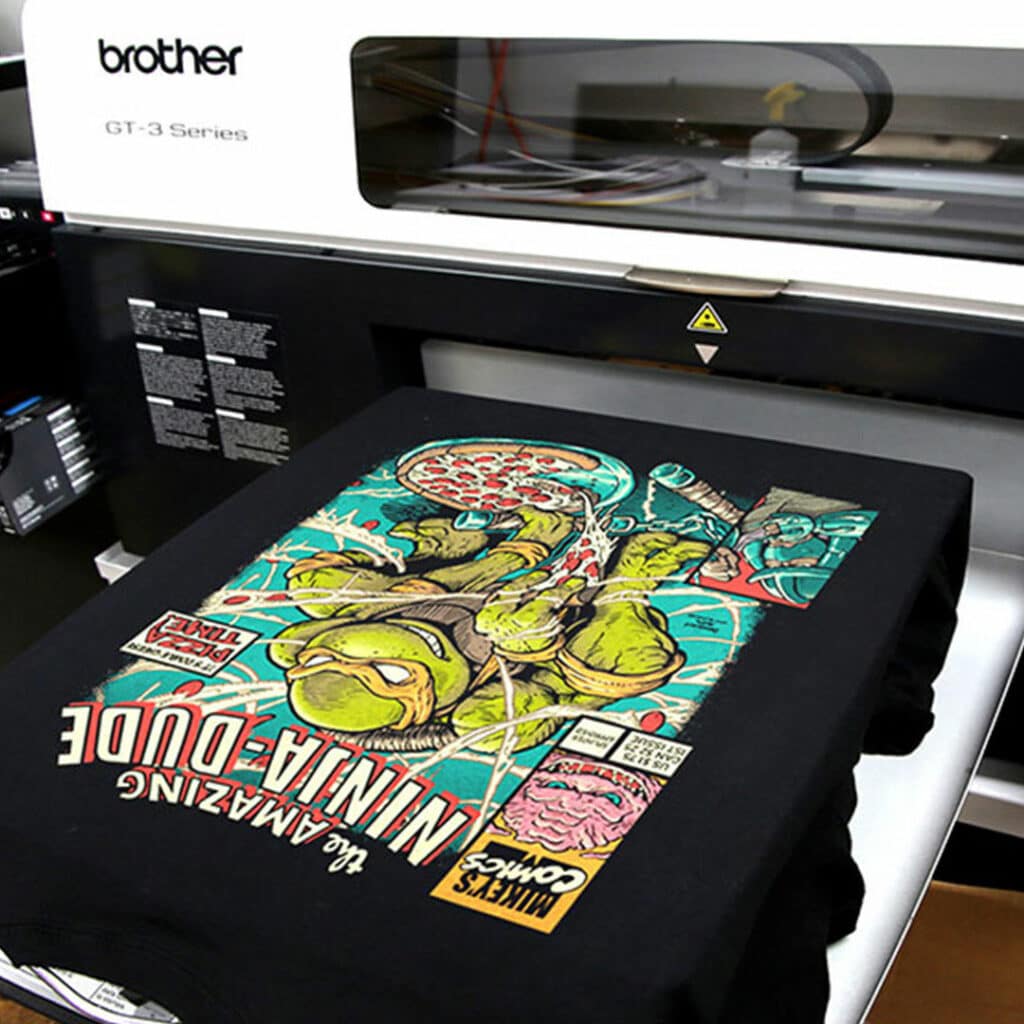Many people are interested in creating printed designs using printing inks at home, and many are also simply interested in how print screens work. Even if you’ve never heard of the term before today, chances are you’ve worn or used a screen-printed product without even realizing it.
Screen printing is a popular printing method used for a variety of applications. There are many uses, from custom T-shirt printing to logo and t-shirt design placement. Whatever your interest in screen printing, you’ve come to the right place! Let’s take a closer look at screen printing.
Screen Printing: What Is It?
The screen printing process involves transferring a stenciled design with ink, mesh screens, and squeegees onto a flat surface. The most common surfaces for screen printing are paper and fabric, but they can also be printed on metal, plastic, glass, and wood.
As mentioned, screen printing on shirts is popular due to the many benefits of using branded merchandise, especially in the office. However, various screen printing techniques are used, and the screen printing process can differ depending on the job at hand.
What Is The Purpose Of Screen Printing?
Its vivid colors, and even darker fabrics, make screen printing popular. In addition, prints are tactile due to the layers of ink or paint applied to the surface.
A printer also favors this technique because it makes printing multiple copies of a design easy. In addition, numerous copies of the same garment or accessory can be created using the same stencil because it can be reused repeatedly.
Consequently, screen printing is one of the best techniques for creating large batches of uniforms and sports apparel. Experienced printers, with the aid of proper equipment, can also print intricate multicolored designs.
Although the process does have a limit when it comes to the number of colors the printer can use, it can achieve more intense colors than is possible with digital printing alone.
What Are The Materials For Screen Printing?
The materials for screen printing are as follows.
Workspace Requirements:
- Layout and printing table for fabric
- Tool storage, paper storage, and fabric test storage
- Print storage/printing area
- Hand washing bucket
Materials:
- Water-based and plastisol inks
- Diluting inks with distilled water
- You’ll need a rubber squeegee (or even a window cleaner) for screen printing.
- You will need a thick piece of fabric or paper to print your design on
- You can use a hair dryer to dry your work
- A spray adhesive used to secure your material to your work surface
The Screen Printing Process Step-By-Step
Let’s take a closer look at the screen printing steps.
Step 1 – Creating the design
Initially, the printer prints the design on acetate film and then attaches it to the finished product. To create the stencil, we will need this.
Step 2 – Preparation of the screen
Printers will choose mesh screens based on the complexity of designs and the texture of the fabrics they are printing. Mesh screens are coated with emulsions that harden under bright light.
Step 3 – Exposure of the emulsion
An emulsion-coated screen is then exposed to bright light, followed by the acetate sheet featuring the design. The emulsions are set (hardened) by the light, so the liquid remains on parts of the screen that are covered by designs.
It is necessary to use different screens for every layer of ink when there is more than one color in the design. Therefore, a printer must use his skills to design each stencil, line them up perfectly, and ensure the final product looks seamless when creating multicolored products.
Step 4 – Wash off the emulsion
Eventually, the screen’s non-covered areas will have hardened after being exposed for a set time. A thorough rinse is then performed to remove any unhardened emulsion. Doing this, the design imprints onto the screen, allowing the ink to pass through.
A printer then makes any necessary corrections or touch-ups to ensure that the imprint is accurate to the original design. Now you can use the stencil.
Step 5 – Preparation for printing
A printing press is then used to place the screen. Upon the printing board, underneath the screen, the item or garment to be printed is laid flat.
Many commercial printers utilize automatic rotary carousel printers, which can print on several screens simultaneously. They can be either manual or automatic.
Step 6 – Ink is applied to the item through the screen
Printing is done by lowering the screen onto the board. Next, a squeegee pulls ink along the screen to the top, adding ink to the screen. Finally, the design is imprinted onto the product by pressing the ink through the stencil’s open areas.
A new garment is placed onto the printing board if the printer creates multiple items. A second round of the process follows.
Step 7 – Drying, checking and completing the product
Ink is then dried and cured in a dryer, creating a smooth, colorfast surface. Finally, we will thoroughly wash and check the final product before passing it on to its new owner.
How Long Does It Take For Screen Printing To Wash Off?
Use the correct washable heat-treated ink. When professionals do screen printing, it shouldn’t fade or wash away.
You should get a long-lasting product that won’t wash out if all process elements are performed correctly, including drying temperature and timing.
Screen printing is used for various reasons, and the process and techniques are fascinating.
Table of Contents
table
Recent Blogs

A Guide to Onboarding New Employees

The Best Ideas for Work Anniversary Gifts

Let’s Socialize
Never Miss a Thing
Subscribe to our newsletter and stay updated to our offers and deals!

